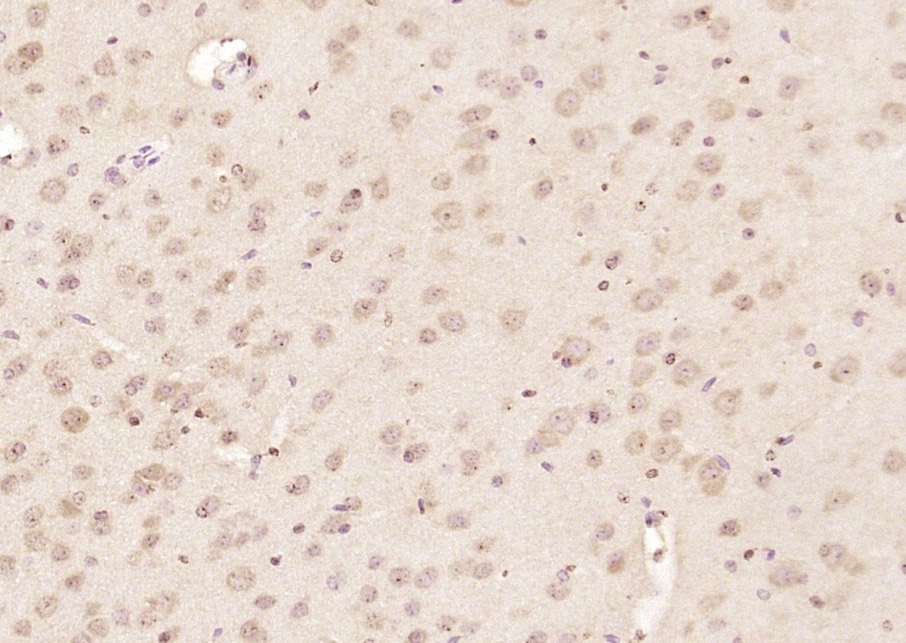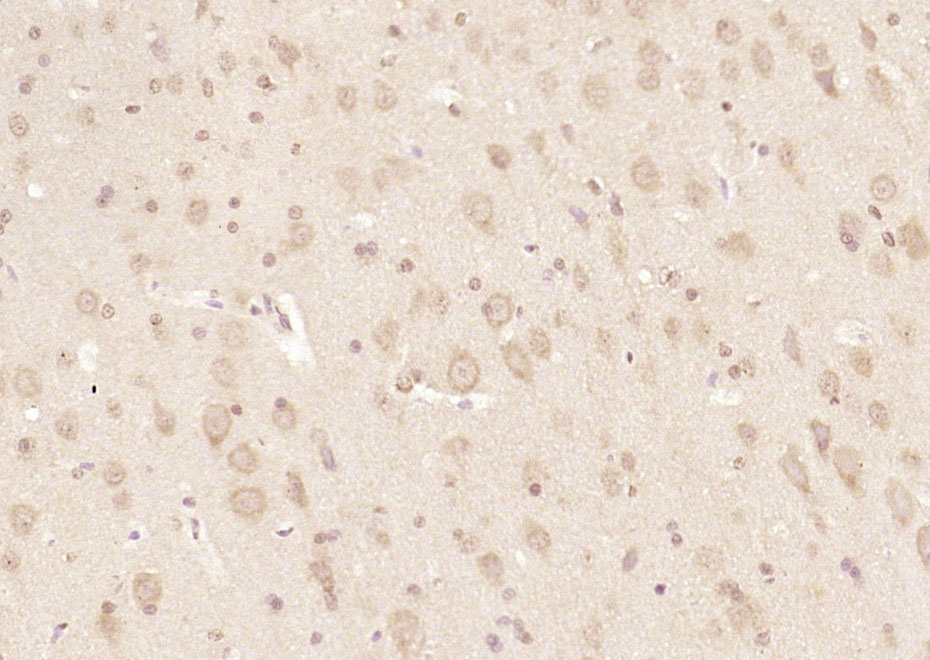
Rabbit Anti-RRAGA + RRAGB antibody
FIP1; RAGA; FIP-1; RRAGB; Adenovirus E3 14.7 kDa-interacting protein 1; Rag A; RAg B; RagA; RAGB; Ras related GTP binding protein A; RRAGA_HUMAN; Ras-related GTP binding A; GTP-binding protein ragB; Rag B; RagB; Ras-related GTP-binding protein B; RRAGB; R
View History [Clear]
Details
Product Name RRAGA + RRAGB Chinese Name RAS相关GTPBinding proteinA抗体 Alias FIP1; RAGA; FIP-1; RRAGB; Adenovirus E3 14.7 kDa-interacting protein 1; Rag A; RAg B; RagA; RAGB; Ras related GTP binding protein A; RRAGA_HUMAN; Ras-related GTP binding A; GTP-binding protein ragB; Rag B; RagB; Ras-related GTP-binding protein B; RRAGB; RRAGB_HUMAN.. Research Area Tumour Cell biology immunology Chromatin and nuclear signals Signal transduction Immunogen Species Rabbit Clonality Polyclonal React Species Mouse, Rat, (predicted: Human, Dog, Pig, Horse, Sheep, ) Applications ELISA=1:5000-10000 IHC-P=1:100-500 IHC-F=1:100-500 ICC=1:100-500 IF=1:100-500 (Paraffin sections need antigen repair)
not yet tested in other applications.
optimal dilutions/concentrations should be determined by the end user.Theoretical molecular weight 37kDa Cellular localization The nucleus cytoplasmic The cell membrane Form Liquid Concentration 1mg/ml immunogen KLH conjugated synthetic peptide derived from human RRAGA and RRAGB: 231-313/313 Lsotype IgG Purification affinity purified by Protein A Buffer Solution 0.01M TBS(pH7.4) with 1% BSA, 0.03% Proclin300 and 50% Glycerol. Storage Shipped at 4℃. Store at -20 °C for one year. Avoid repeated freeze/thaw cycles. Attention This product as supplied is intended for research use only, not for use in human, therapeutic or diagnostic applications. PubMed PubMed Product Detail Involved in the RCC1/Ran-GTPase pathway. RRAGA may play a direct role in a TNF-alpha signaling pathway leading to induction of cell death. May alternatively act as a cellular target for adenovirus E3-14.7K, an inhibitor of TNF-alpha functions, thereby affecting cell death. Has guanine nucleotide-binding activity but undetectable intrinsic GTPase activity. biquitously expressed with highest levels of expression in skeletal muscle, heart, and brain.
Function:
Has guanine nucleotide-binding activity but undetectable intrinsic GTPase activity. Required for the amino acid-induced relocalization of mTORC1 to the lysosomes and its subsequent activation by the GTPase RHEB. This is a crucial step in the activation of the TOR signaling cascade by amino acids. Involved in the RCC1/Ran-GTPase pathway. May play a direct role in a TNF-alpha signaling pathway leading to induction of cell death. May alternatively act as a cellular target for adenovirus E3-14.7K, an inhibitor of TNF-alpha functions, thereby affecting cell death.
Subunit:
Binds GTP. Can occur as a homodimer or as a heterodimer with RRAGC or RRAGD in a sequence-independent manner; heterodimerization stabilizes PPAG proteins. In complex with RRAGC, but not with RRAGB, interacts with RPTOR. The GTP-bound form of RRAGA interacts with NOL8. Interacts with adenovirus E3 14.7 kDa protein.
Subcellular Location:
Cytoplasm. Nucleus. Lysosome. Note=Predominantly cytoplasmic. May shuttle between the cytoplasm and nucleus, depending on the bound nucleotide state. Colocalizes in vivo with adenovirus E3-14.7K mainly to the cytoplasm especially near the nuclear membrane and in discrete foci on or near the plasma membrane.
Tissue Specificity:
Ubiquitously expressed with highest levels of expression in skeletal muscle, heart, and brain.
Similarity:
Belongs to the GTR/RAG GTP-binding protein family.
SWISS:
Q7L523
Gene ID:
10670
Database links:Entrez Gene: 10670 Human
Entrez Gene: 68441 Mouse
Omim: 612194 Human
SwissProt: Q7L523 Human
SwissProt: Q80X95 Mouse
Unigene: 702275 Human
Unigene: 31178 Mouse
Unigene: 2816 Rat
Product Picture
Bought notes(bought amounts latest0)
No one bought this product
User Comment(Total0User Comment Num)
- No comment




 +86 571 56623320
+86 571 56623320
 +86 18668110335
+86 18668110335

